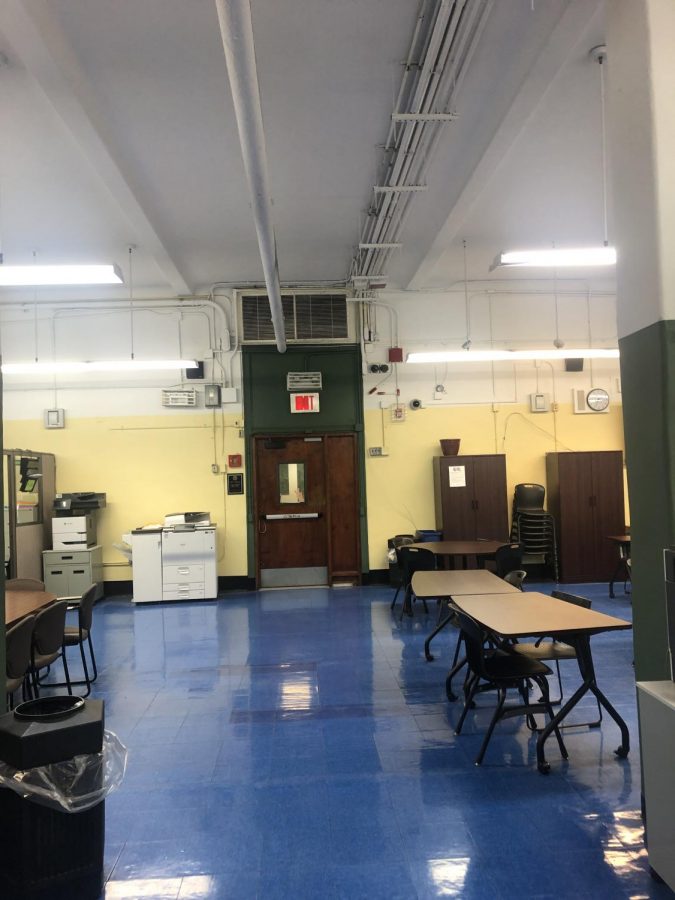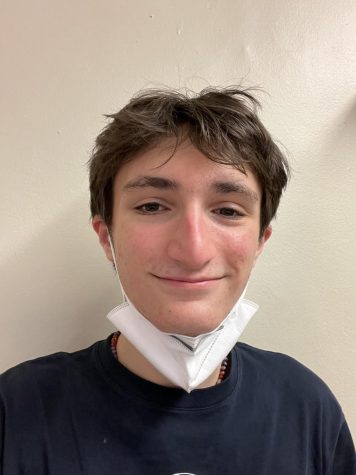COVID-19 ended one of the iSchool’s most connecting traditions. But it doesn’t have to stay this way
December 2, 2021
From freshman year all the way up until the pandemic, I can remember countless moments that I spent upstairs during lunch, eating my lunch, getting work done, and connecting with my teachers all the while. I also remember sneakily eating food in the Commons while playing a competitive game of Connect Four. It was a part of the iSchool’s close knit community, where people could play games in the Commons with their friends or with peers, or could opt to spend their lunch catching up on missed work.
COVID-19 changed a lot of things. Unless you live under a rock, the virus’ impact on all communities, including the iSchool, is very evident. Because of the virus still being around, students can no longer eat food upstairs, in any capacity, even in a classroom with one person in it. Understandably, students can’t eat in class, and this article won’t touch on that. However, the “safer” alternative for eating food inside clearly isn’t much safer.
The only way students can eat lunch is taking their lunch from home down to the cafeteria, or eating cafeteria-made food. Those who have been in the cafeteria know that there are no windows and one air purifier. No social distancing protocols are followed, and students pack into crowded tables and most keep their mask off for the whole meal. So, not only are iSchoolers (and Chelsea students) breathing on each other, but the collective germs all float in the air. Even some teachers can be seen with their masks down. The only place where proper COVID rules are followed is in the kitchen, where four students are allowed in the line at a time.
My alternative is that, with the abundance of rooms in the iSchool, whether it’s the widely spaced chemistry lab, or the Commons, students should be able to eat their food upstairs. Considering the amount of work that has gone into purchasing Intellipure air purifiers, ensuring social distancing in classrooms, and the adherence to keeping the windows open, even on the coldest of days, having five or so students spaced out in a classroom, eating their lunch, shouldn’t be any less safe than the current situation in the cafeteria.
Newly released data show that 100% of iSchool staff and 94% of students are fully vaccinated. There were only two confirmed cases of COVID in the iSchool during the 2020-2021 school year, a year where people spent their lunch the same way I’m proposing: socially distanced, eating their food upstairs. Those two COVID cases came during a time when a vaccine was not yet available. Now, we have an extra weapon that we can use to fight off COVID, and it’s working, considering we went the whole first quarter without a confirmed case of COVID-19, and only have had one case of COVID since.
Teachers know their own classrooms better than most students, and one safety measure that could help is teachers making their own rules; including proof of vaccine to eat in their room, like indoor dining in NYC, and setting a maximum number of students allowed in each room.
“{Those rules} would make me feel more comfortable,” said Ms. Gray, who teaches English. “I eat at restaurants indoors from time to time, and I know that’s safe because everyone is vaccinated, so, given those same parameters, I would definitely feel comfortable enough to do that from time to time.”
Proof of vaccination is a little tricky, though. The HIPAA (Health Insurance Portability and Accountability Act) “establishes national standards to protect individuals’ medical records and other personal health information and applies to health plans,” according to the HHS.
“I understand that procedural aspect to it, it’s tricky only because we can’t legally ask students if they’re vaccinated,” said Dr. Snyder, who also teaches English. “There are students who aren’t vaccinated, and that becomes risky. The procedure of asking students for vaccination couldn’t be implemented legally,” he said, referencing the HIPAA Act as a potential roadblock.
“We don’t have a vaccine mandate, so a group of people could be in a room with someone who’s unvaccinated and we wouldn’t know,” said Ms. Coleridge, who teaches math. “Even though we have a very high student vaccination rate, I think if you’re eating you should sit far away and be very quick about it.”
Some teachers, however, acknowledge that students do need other places to eat.
“I do think it would be nice if the Commons were open for students to eat in, I know there’s not much space elsewhere, and it’s getting cold so people don’t want to eat outside,” said Ms. Barber, who teaches global history.
“I think the Commons could get a little messy. If there were teachers who wanted to open rooms for small groups of students to do so, I think that could be a teacher’s choice.” Ms. Coleridge added.
However, a lot of students feel that we should be able to have lunch upstairs, or in a different area besides the cafeteria, especially considering that eating lunch upstairs was the only option during the 2020-2021 school year, when COVID spread more uncontrolled in New York City.
“If we can drink water during class, I don’t see a reason why we can’t eat lunch upstairs,” said Ruby Germack, a senior. “When COVID was spiking, we used to do this exact same thing.” Germack also questioned why people are allowed to defy COVID rules in the cafeteria, and why that environment is the default for students that are late.
“I think we should be able to eat lunch upstairs. We did this same thing last year during hybrid school, there isn’t really much difference now,” said Nealy Simms, a senior.
Some students also said that it isn’t fair for people that are late who would prefer to eat in a safer environment. It’s worth saying that eating lunch indoors, with distancing and open windows, could be just as safe as eating outdoors, with less distancing and masking.
“It disadvantages students who live far away and don’t have the time to eat in the mornings,” said Nassia Curtis, a junior.
“I think there should be specific places where we’re allowed to eat,” said Josh Eliot, a senior. “I understand the dangers of COVID, and if there are precautions that are taken, especially people that are late, there should be other areas for people to eat.”
With all things considered, it’s obvious that many students feel the cafeteria is unsafe and that eating there puts them at risk of catching COVID. There are many alternatives, and for now, the iSchool administration should consider opening up other places for students to eat aside from the cafeteria and lunch out.



